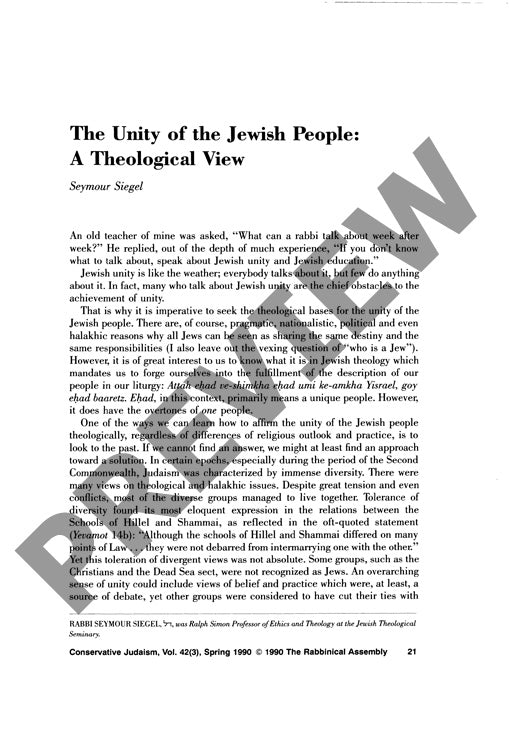The Unity of the Jewish People a Theolog
Couldn't load pickup availability
Jewish communities throughout history maintained religious unity despite profound theological differences - a paradox that offers critical insights for modern denominational divisions. Drawing on historical precedent, particularly the relationship between the Schools of Hillel and Shammai, alongside modern scholarly interpretations by Judah Goldin, Max Kadushin, and Abraham Joshua Heschel, patterns emerge showing how ancient Judaism sustained cohesion through disagreement. Analysis of Rabbinic literature reveals that Jewish unity historically depended on two key factors: continued engagement in communal dialogue rather than sectarian withdrawal, and shared commitment to core value concepts such as Torah, Israel, Messiah, and divine kingship, despite varied interpretations of these terms. Kadushin's framework demonstrates how non-definable concepts allowed individual expression while maintaining communal unity through shared terminology. The analysis of Maimonides' rulings on Torah revelation, interpreted through Heschel's scholarship, suggests that dogmatic boundaries were established primarily to counter specific heresies rather than to impose rigid uniformity. Contemporary Jewish religious unity requires mutual respect among differing interpretations, recognition of divine transcendence beyond human formulations, and incorporation of doubt into faith. This theological approach advocates for unity based on shared ancient commitments while preserving interpretive freedom, offering a framework for bridging contemporary denominational divisions within Judaism.

More Information
-
Physical Description
-
Publication Information
Published 1990
ISBN
-
Publication Credits
Seymour Siegel

